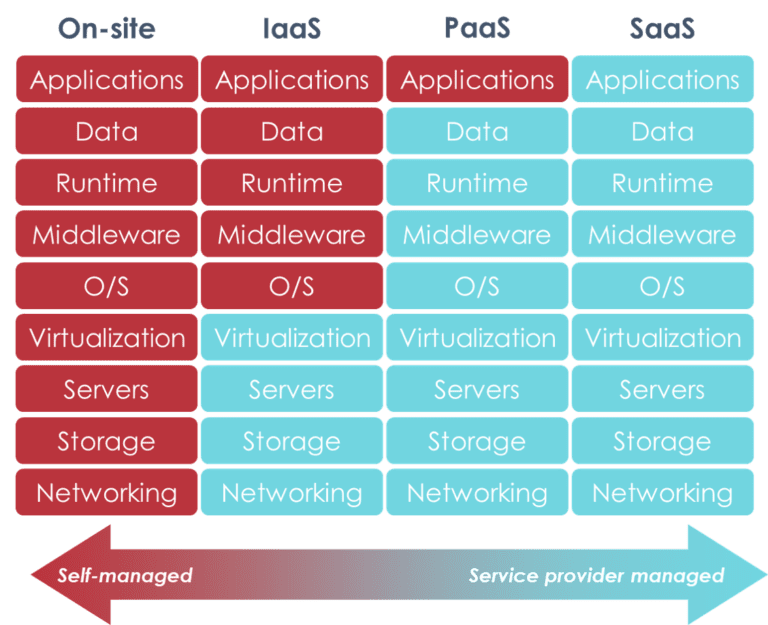
It’s clear that digital transformation is no longer a nice to have but a necessity for future viability. At Qu, we believe the winning restaurants in the “new post-pandemic economy” will be those that adopt modern technology approaches (think: agile, scalable, and modern platforms) and embrace new ways of thinking and operating.
Here are the top 3 ways we recommend restaurant chains approach their technology refreshes and digital transformation journey to meet the challenges of the 21st century and beyond.
1) Deploy the right software operating model
The easiest to maintain software model—SaaS—virtualizes everything, so the IT departments can focus more on configuring for their specific needs and integration with other applications in the stack. For most industries, the SaaS model is ideal, but there are a few caveats when it comes to real-time connectivity in restaurant locations. Restaurants depend greatly on end-user hardware for their POS and production systems, which in turn rely on network connectivity to operate successfully. For that reason, a full SaaS solution falls short.
Infrastructure management can be envisioned on a continuum from fully self-managed to fully managed by service providers:

Often the ideal solution will be towards the right of the continuum, close to SaaS, but with configurability of data, local solutions for connectivity, and allowances for dedicated POS hardware.
Modular architecture is another important element of a more flexible software deployment model. This approach—along with the recent rise of containerization and dockers—has reduced the inherent complexity of IT’s role for enterprise brands, through increased virtualization of services and servers. However, even with the availability of these technologies, many restaurant chains are still stuck with software stacks that limit their flexibility, leading to increased maintenance costs and reducing their ability to quickly integrate new changes.
A modular software architecture can alleviate these pain points, while providing some tangible advantages:
- One, as stated above, is that you can integrate these modules with other software that may already have been deployed within your ecosystem, in addition to applications that you may need to deploy in the future, based on business need or advancements in the industry.
- A second advantage of modular software architecture is the greater choice and flexibility that this model provides — enterprise brands now often don’t have to purchase unnecessary functionality or applications. You’re able to retain the software that you like, deploy functionality based on specific needs, and upgrade when your business requires it.
- Finally, an important third advantage is this approach helps future-proof your business and technology ecosystem. Implementing a modular architecture helps you meet the needs of a fast-changing technology landscape, and gives you the ability to deploy functionality faster than you’d be typically able to using a legacy software model.
In a space that is changing as quickly as the restaurant industry, this type of future-proofing makes a huge difference in your agility, your operational costs, and your ability to please and meet the demands of your guests.
Operations and guest engagement have also been heavily influenced by another force that the right restaurant software model can accommodate: integrations.
2) Make sure your tech stack plays well with others
Menus can vary depending on regional preferences, delivery channels (eat in, takeout, third-party delivery, etc.), and inventory. This level of complexity has created a real challenge for operators, who often find themselves distracted from their core objectives of delighting guests and growing their business, due to the need to maintain a multitude of menus.
Single menu management is one of the major issues that need to be addressed today, made obvious by common problems like:
- Difficulty in editing and updating third-party delivery menus in real-time
- An inconsistent guest experience
- Making regional or location-specific changes
- Lack of integration between inventory and menus
- The inability for specific franchise owners to offer local specials
- Challenges identifying the same customer when they order through a different channel
3) Capture, store, and normalize your data


